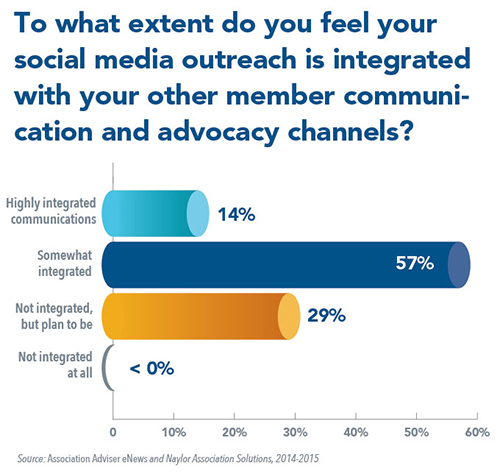Communication Integration More Easily Said Than Done
As we discussed last month, our annual benchmarking research study found that associations with integrated member communication strategies are significantly outperforming other associations by a wide variety of measures. However, developing an integrated communications strategy appears to be more easily said than done.
Early results of our unscientific reader poll this month show that only one in seven readers (14 percent) feel their organization has a highly integrated communication strategy. That said, more than half of respondents (57 percent) feel they have at least a “somewhat integrated” strategy, and another three in ten (29 percent) plan to start the process soon.

Again, our definition of “communications integration” has three key components:
- Each communication vehicle has a well-defined frequency/message/audience/purpose.
- Content is cross-purposed and cross-promoted as appropriate.
- Advertisers have the ability to coordinate their buys across all channels.
Tell us the definition your organization uses.
“The best usage of social media for us is through Facebook,” explained Nicole Malcolm, director of operations for the American Holistic Nurses Association and a benchmarking survey participant. Many of AHNA’s members are in the 40 to 55 age range, and Malcolm said they seem to be most comfortable with Facebook-style connectivity. “Our second-highest usage of social media is through LinkedIn, with many of our nursing professionals promoting themselves [there]. AHNA is looking to increase our social media presence through videos on YouTube, and by creating an online blog that is directly connected through the AHNA website,” Malcom said.
See today’s Corner Office profile as Kurt Nagle, CEO of the American Association of Port Authorities, explains how his organization integrates its traditional and social media channels so it can reach both its on-the-go members and increasingly mobile legislators on Capitol Hill.

